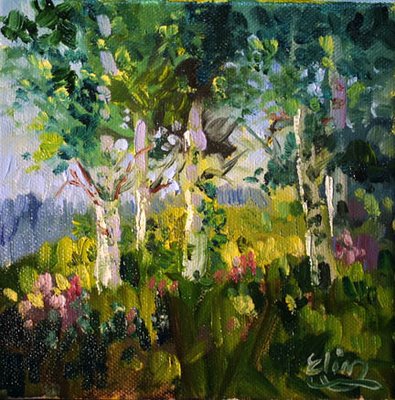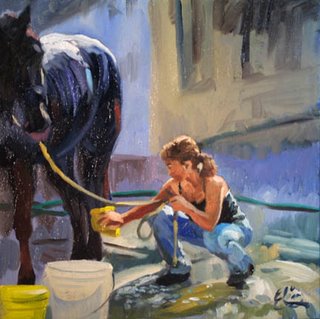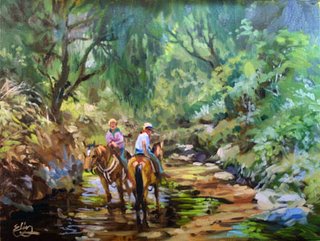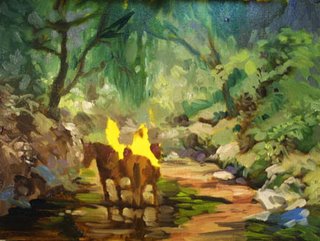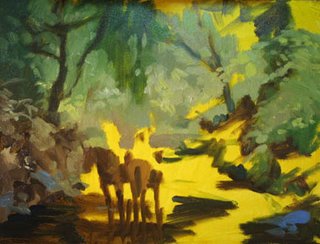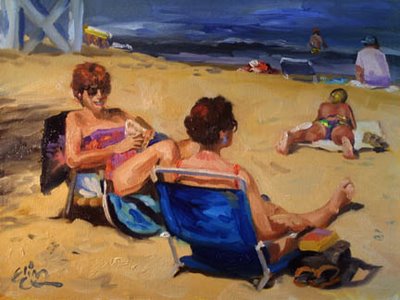
"Beach Babes" I just love this
daily painting! Why? First and foremost, it has good, solid design. Second, it is a fun painting. There are SO many possible stories to entertain the viewer. It gives everyone, from the gossip to the voyeur, something to appeal to the senses. I took the reference photos for this a few years ago when I was out at Catalina Island (you know, the one off the coast of California, "Twenty-six miles across the sea."). People were lounging on the sand, and playing in the harbor water. The design on this one is strong and interdependent. Put your fingers over any one figure or item in the composition, and you'll see what I mean; it just weakens the painting. Most reference shots you take are never as well designed as what the artist can do with their skills.
Beach scenes also give me an opportunity to really pull out the stops on color. Beachwear is bright and generally has a ton of pure color. For this painting, I resurrected one of my favorite Classsic Oils, Platinum Violet. You'll see it in the bathing suits and the shadow on the distant man's tee shirt.
Although this one isn't a lesson painting, there is much to learn from it.
A 12 x 16 oil, it is available for $400.


